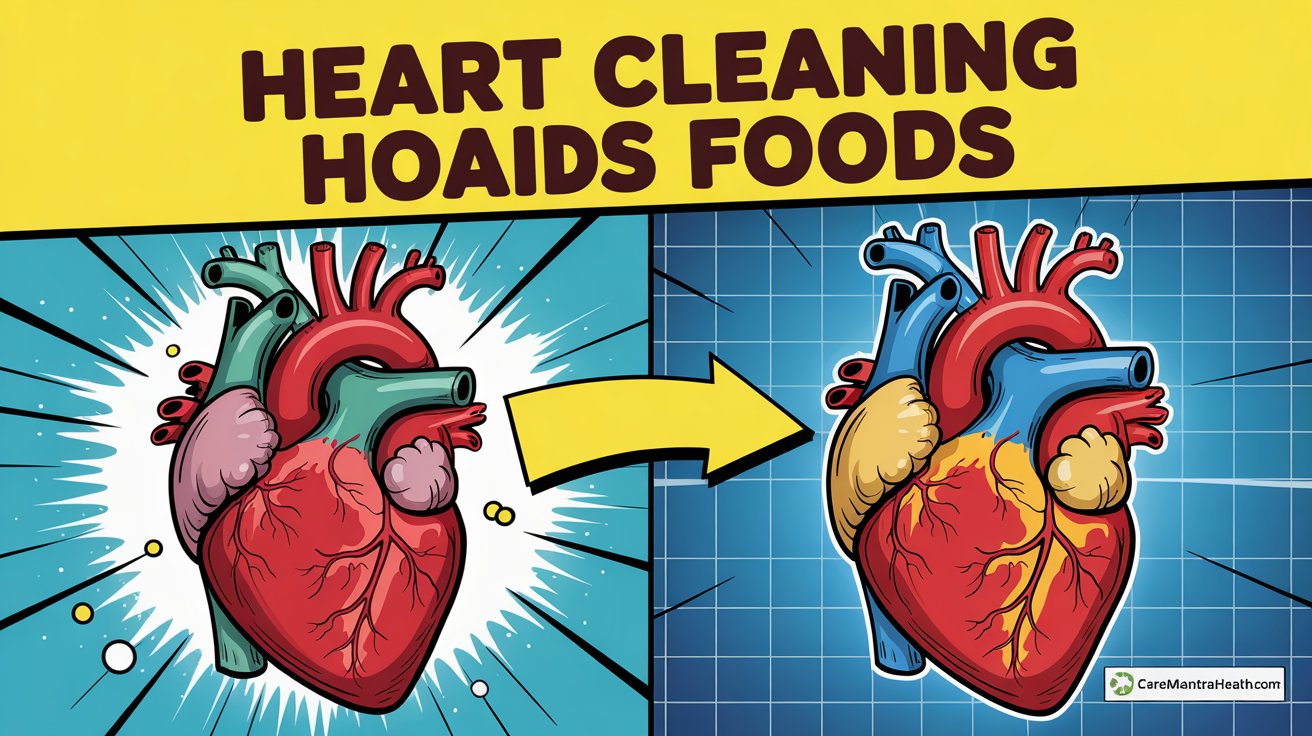Heart-healthy diet: 8 steps to prevent heart disease

When it comes to leading a long, vibrant life, your heart is at the center of it all — quite literally. Every beat is a reminder of how essential heart health is to overall well-being. Yet, heart disease remains one of the leading causes of death worldwide. The good news? Much of it is preventable. While genetics play a role, your lifestyle choices, especially your diet, have a profound impact on your heart’s future. Crafting a heart-healthy diet isn’t about extreme restrictions or complicated rules. Instead, it’s about embracing simple, delicious changes that nourish your body while protecting your heart. With the right foods, you can lower cholesterol, manage blood pressure, reduce inflammation, and boost your overall cardiovascular strength.
In this blog, we’ll walk you through 8 smart, actionable steps to build a diet that supports heart health. From adding superfoods to avoiding common pitfalls, this guide simplifies everything you need to know. Whether you're taking preventive measures, managing existing conditions, or simply striving for a healthier life, this heart-centered eating plan will empower you to take charge — naturally and effectively. Let's dive into the journey toward a stronger, healthier heart!
Heart-Healthy Diet: 8 Steps to Prevent Heart Disease
1. Load Your Plate with Fruits and Vegetables

Fruits and vegetables are nature’s medicine for your heart. Packed with vitamins, minerals, antioxidants, and fiber, they help lower blood pressure and cholesterol levels naturally. Aim to fill half your plate with colorful produce like leafy greens, berries, oranges, tomatoes, and broccoli. These foods provide essential nutrients that help strengthen your blood vessels and reduce oxidative stress, a major contributor to heart disease.
2. Choose Whole Grains Over Refined Carbs

Whole grains like oats, quinoa, brown rice, and whole wheat bread are rich in fiber, which can lower bad cholesterol (LDL) and regulate blood sugar levels. Unlike refined carbohydrates that spike blood sugar, whole grains digest slowly, providing steady energy and promoting heart health. Incorporating more whole grains is one of the easiest steps to prevent heart disease without sacrificing flavor.
3. Prioritize Healthy Fats and Avoid Trans Fats

Not all fats are created equal. Healthy fats for heart health, such as those found in avocados, nuts, seeds, and olive oil, can actually protect your cardiovascular system. On the flip side, trans fats, often hidden in processed and fried foods, increase bad cholesterol and inflammation. Reading food labels and choosing products with "0 grams trans fat" is a powerful step toward a heart-friendly diet plan.
4. Reduce Sodium Intake to Control Blood Pressure

Excessive salt consumption is a silent culprit behind hypertension, which strains the heart over time. Focus on low sodium heart healthy foods like fresh produce, unsalted nuts, and homemade meals seasoned with herbs and spices instead of salt. Be cautious with canned foods, packaged snacks, and restaurant meals, where hidden sodium can add up quickly.
5. Incorporate Lean Protein Sources
Protein is crucial for overall health, but the type of protein matters. Opt for lean cuts of poultry, fish rich in omega-3s (like salmon and sardines), legumes, and plant-based proteins. Fish, in particular, plays a major role in heart disease prevention diet plans due to its anti-inflammatory properties. Reducing red meat and processed meat consumption is key to improving heart health naturally.
6. Watch Your Portion Sizes

Even when eating healthy, portion control remains vital. Overeating, even on nutritious foods, can lead to unwanted weight gain, which increases the risk of heart disease. Try using smaller plates, mindful eating practices, and listening to your hunger cues. Maintaining a healthy weight reduces strain on the heart and is an important diet strategy to prevent heart attack risks.
7. Limit Added Sugars and Sweetened Beverages

Sugary foods and drinks contribute not only to weight gain but also to diabetes and heart disease. Swap sodas, candies, and pastries with healthier options like fruit-infused water, natural fruit desserts, and dark chocolate (in moderation). Understanding how to lower cholesterol naturally often begins with cutting back on hidden sugars lurking in everyday foods.
8. Follow Proven Heart-Healthy Diet Models Like DASH or Mediterranean

Both the DASH diet benefits (Dietary Approaches to Stop Hypertension) and the Mediterranean diet for heart health have been extensively studied and proven effective. These eating patterns emphasize fresh produce, healthy fats, whole grains, lean proteins, and low sodium — all pillars of heart protection. Adopting one of these models provides a simple, structured path to better heart health without overcomplicating your routine.
Final Thoughts:
The journey to a healthier heart begins with simple, mindful choices at every meal. Swapping processed foods for natural ones, embracing unsaturated fats, cutting excess salt and sugar, and focusing on colorful, fiber-rich plates can make a world of difference. Small, consistent efforts today nurture a powerful, resilient heart for a vibrant future.
Disclaimer
The information presented here is carefully researched and summarized from top medical sources. This content is for educational purposes only and should not replace professional medical advice. Always consult your healthcare provider for personalized guidance.
📚 Sources
- https://www.health.harvard.edu/heart-health/heart-healthy-foods-what-to-eat-and-what-to-avoid
- https://www.heart.org/en/healthy-living/healthy-eating/eat-smart/nutrition-basics/aha-diet-and-lifestyle-recommendations
- https://www.mayoclinic.org/diseases-conditions/heart-disease/in-depth/heart-healthy-diet/art-20047702
- https://www.bhf.org.uk/informationsupport/support/healthy-living/healthy-eating
- https://www.nhlbi.nih.gov/heart-truth/eat-a-heart-healthy-diet
- https://www.heartfoundation.org.au/healthy-living/healthy-eating/heart-healthy-eating-pattern
- https://www.healthline.com/nutrition/heart-healthy-foods